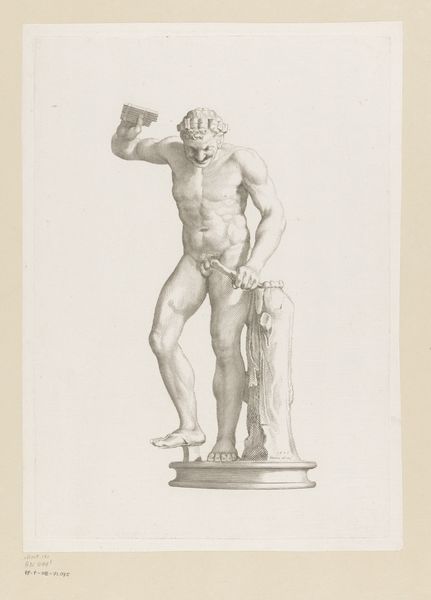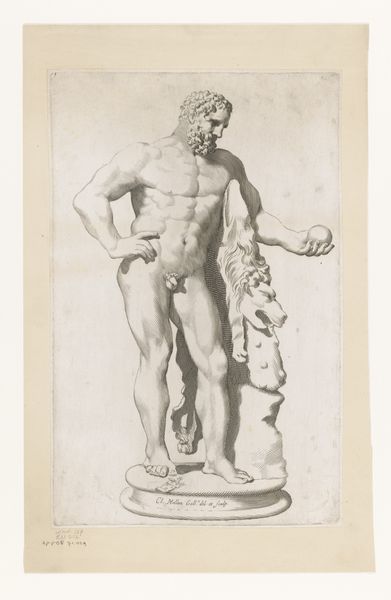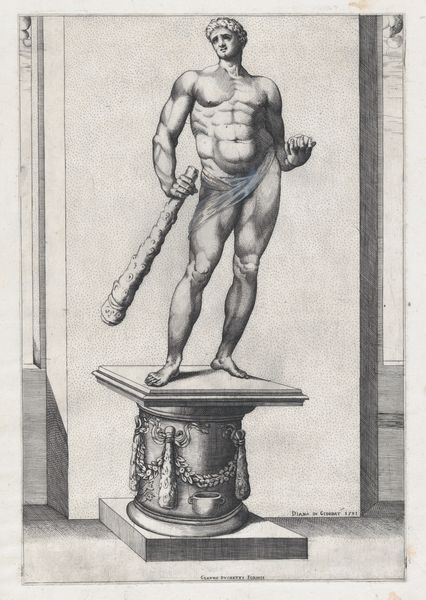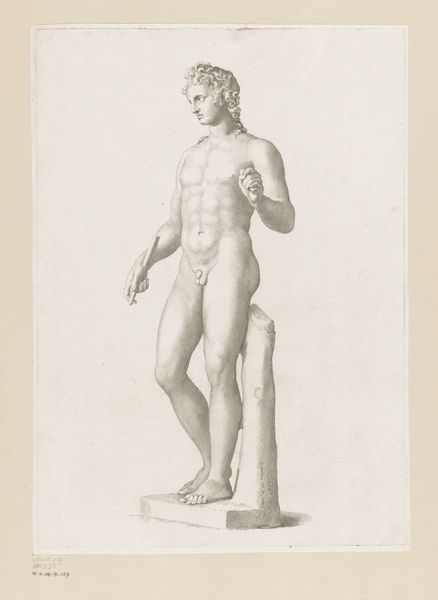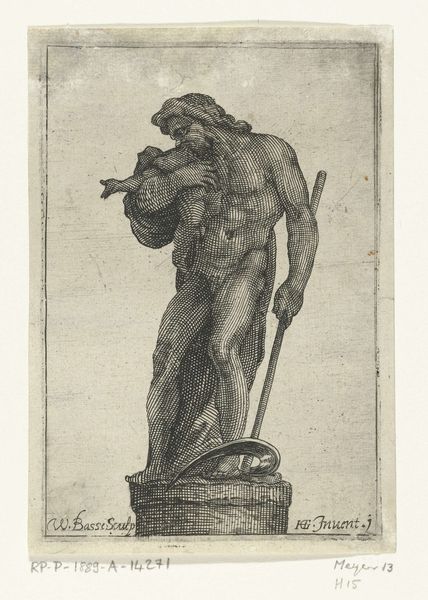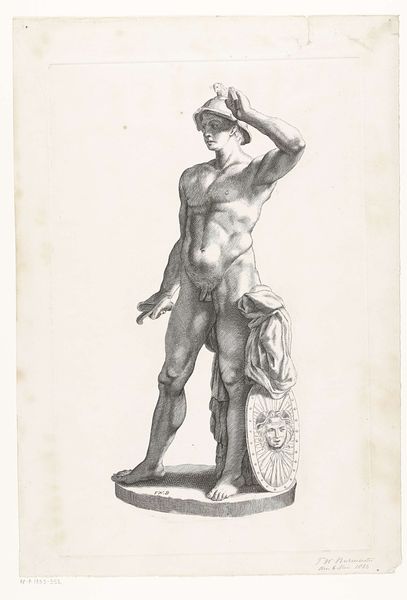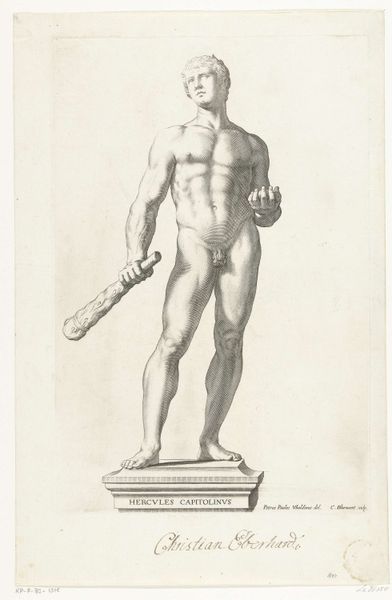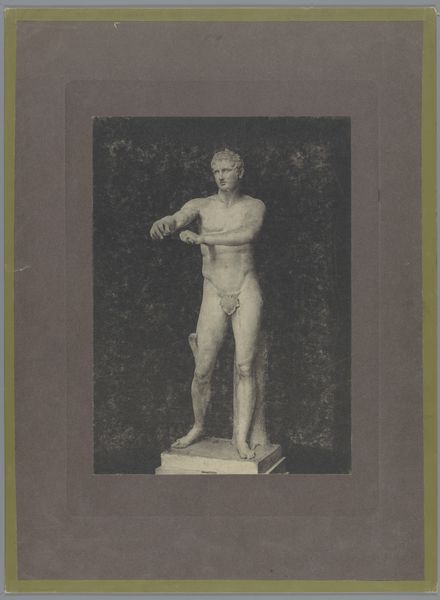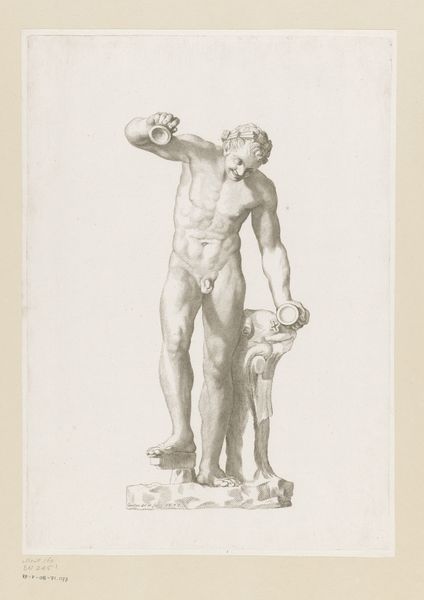
print, metal, engraving
# print
#
metal
#
figuration
#
11_renaissance
#
line
#
history-painting
#
italian-renaissance
#
nude
#
engraving
Dimensions: height 351 mm, width 238 mm
Copyright: Rijks Museum: Open Domain
Curator: Diana Mantuana's 1581 engraving, "Hercules met de gouden appels", presents the hero after retrieving the golden apples of the Hesperides. It is striking, wouldn't you say? Editor: Striking in its...idealization? This is clearly a constructed masculinity, all hard lines and idealized anatomy. It almost feels like a declaration of power rather than a depiction of a vulnerable human experience. Curator: Indeed, the rigorous lines articulate Hercules’s form. Mantuana’s strategic use of hatching and cross-hatching sculpts a sense of volume and musculature, creating a highly structured composition. He dominates the framed space he inhabits. Editor: And that space is telling. The classical architecture surrounding Hercules—it frames and elevates him but it also cages him. I wonder about the tensions inherent in depicting a mythological hero within a rigid system of representation, almost a visual codification of patriarchal power. Curator: Yet, it’s also about mastering form. Note the precision of the engraving, a meticulous process of incising lines onto metal to achieve tonal gradations and textural effects. Mantuana clearly mastered her medium to capture and communicate classical ideals of beauty and strength. Editor: Absolutely, technically brilliant, but to what end? Hercules, often depicted as a figure of action, is presented here passively holding the apples, almost as a trophy. The labor he represents serves as a vehicle for masculine display. It asks us to reconsider who benefits from that labor, whose stories get told, and whose bodies become symbols. Curator: A persuasive counterpoint. It makes us appreciate how formal structure, while inherently fascinating, only truly resonates when brought into contact with the questions you raise. Editor: Agreed. Seeing Mantuana's Hercules isn't just about aesthetic appreciation. It is also about engaging in critical dialogue around power and representation within historical art.
Comments
No comments
Be the first to comment and join the conversation on the ultimate creative platform.

